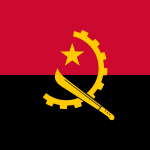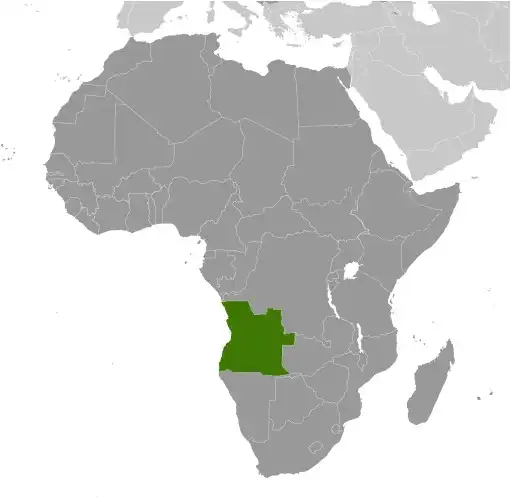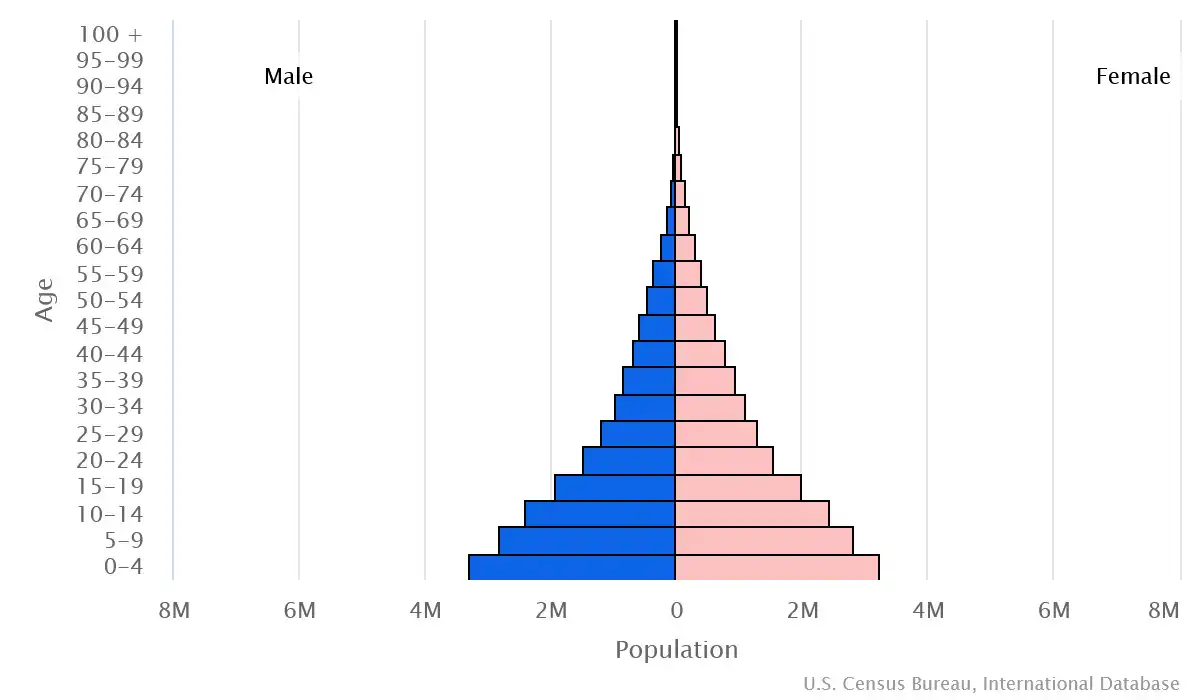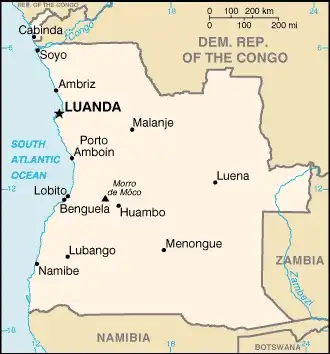
Angola
Country Data Dashboard

| Government type: | presidential republic |
| Capital: | Luanda |
| Languages: | Portuguese 71.2% (official), Umbundu 23%, Kikongo 8.2%, Kimbundu 7.8%, Chokwe 6.5%, Nhaneca 3.4%, Nganguela 3.1%, Fiote 2.4%, Kwanhama 2.3%, Muhumbi 2.1%, Luvale 1%, other 3.6% (2014 est.) |
People & Society
Ethnicity (mixed European and native African)
Religion (2014 est.)
Age structure

Economy
Economic overview
middle-income, oil-dependent African economy; widespread poverty; rising inflation and currency depreciation; seeking diversification through agricultural production; significant corruption in public institutions; major infrastructure investments from China and US; exited OPEC in 2023
Real GDP (purchasing power parity) in Billion $
Real GDP per capita in $
Exports & Imports in billion $
Top 5 Import Partner in 2022 (51%)
Top 5 Import Commodities in 2022
- refined petroleum ⛽
- wheat 🌾
- cars 🚗
- poultry 🍗
- palm oil 🛢️
Top 5 Export Partner in 2022 (51%)
Top 5 Export Commodities in 2022
- crude petroleum 🛢️
- natural gas 💨
- diamonds 💎
- ships 🚢
- refined petroleum ⛽
Geography
Map

Area
Natural resources
- petroleum 🛢️
- diamonds 💎
- iron ore ⛓️
- phosphates ⛏️
- copper 🟧🪙
- feldspar 🪨
- gold 💰
- bauxite 🪨
- uranium ☢️
Climate
semiarid in south and along coast to Luanda; north has cool, dry season (May to October) and hot, rainy season (November to April)
Historical Background Information
The Angolan National Revolution began in 1961, and in 1975, Angola won its independence when Portugal’s dictatorship fell, a collapse that occurred in part because of growing discontent over conflict in Angola and other colonies. Angola’s multiple independence movements soon clashed, with the Popular Movement for Liberation of Angola (MPLA), led by Agostinho NETO, taking power and the National Union for the Total Independence of Angola (UNITA), led by Jonas SAVIMBI, emerging as its main competitor. After NETO’s death in 1979, Jose Eduardo DOS SANTOS, also of the MPLA, became president. Over time, the Angolan civil war escalated and became a major Cold War conflict, with the Soviet Union and Cuba supporting the MPLA and the US and South Africa supporting UNITA. Up to 1.5 million lives may have been lost -- and 4 million people displaced -- during the more than a quarter-century of fighting. SAVIMBI's death in 2002 ended UNITA's insurgency and cemented the MPLA's hold on power. DOS SANTOS did not seek reelection in 2017 and supported Joao LOURENCO’s successful bid to become president. LOURENCO was reelected in 2022. Angola scores low on human development indexes despite using its large oil reserves to rebuild since 2002.
